EV Supercars

Porsche Taycan Turbo S
Porsche has already built their fully electric supercar and it’s called the Taycan. Currently, the quickest Taycan is the Taycan Turbo S, which boasts 560 kW of power, 1,050 N⋅m of torque, a 0-100 km/h sprint time of just 2.8 seconds and a top speed of 260 km/h. We knew it would be fast, but it will also manage around 400 km of travel before a recharge is needed. Of course, that range will be affected by factors like the weather, number of hills in your commute, how heavy your right foot is, how many on-board features you’re running and how much extra weight is on board – all much the same traits that affect combustion consumption…
Tesla is the biggest name in electric vehicles, and their new Roadster sets the supercar performance benchmark. Revealed back in 2017, the second-generation Tesla Roadster will be capable of skipping through the 0-100 km/h in around 2 seconds, the 0-160 km/h dash in 4.2 seconds, the quarter mile in 8.8 seconds and boast a top speed of around 400 km/h. These records are aided by a phenomenal 10,000 Nm combined torque output for the AWD system and a drivable range before recharging of even over 900 km. The new Tesla Roadster sales will likely begin 2022.
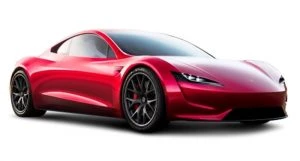
Tesla Roadster
Porsche and Tesla are, perhaps, the more well-known leaders in EV supercar technology.
Ferrari has yet to build a fully electric car. Ferrari is concentrating on their hybrid supercars; the new Ferrari SF90 Stradale being the latest model that incorporates electric motors with the combustion engine layout. Ferrari claims the SF90 Stradale can clean out the 0-100 km/h sprint in well under 3 seconds, the 0-200 km/h dash in less than 7 seconds, while reaching a top speed in excess of 330 km/h. The SF90 Stradale can also travel 12-to-24 km on battery power alone. John Elkann, from Ferrari, says the company will offer its first electric supercar at some stage this decade, but the hybrid models would still form part of its line-up even in 2030. However, that said, Ferrari is looking to sell the Ferrari Purosangue as their first SUV with hybrid engines, along with a fully-electric powertrain for the two following Purosangue models. From the word go, the Purosangue will be designed with the chassis structured to take full electric power. The first hybrid Purosangue should be on sale between 2024 and 2026.
You can’t talk about Ferrari’s electric future without considering Lamborghini’s. Lamborghini has yet to develop an all-electric supercar. Come 2021/2022, Lamborghini is offering a production hybrid supercar called the Lamborghini Sian FKP 37. That sounds like a similar direction to Ferrari; however, Lamborghini did unveil the Terzo Millennio concept car back in 2017.
So, who else is offering fully electric supercars? The following EV supercars have been built up by various entrepreneurs and joint ventures and are, therefore, very rare. Here are some of them to whet your appetite:
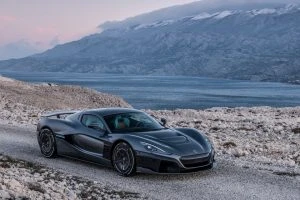
Rimac C_Two
The Rimac C_Two has a 412 km/h top speed backed up with approximately 500 km of electric range.
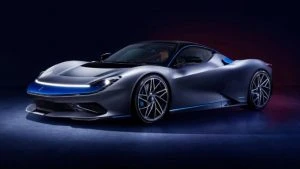
Pininfarina Battista

Lotus Evija
The Lotus Evija has a claimed 1,680 kg weight – pretty light for an EV supercar.
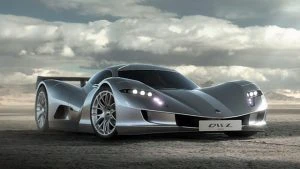
Aspark Owl
Aspark Owl with its 0-100 km/h sprint done and dusted in less than 2 seconds. Top speed over 400 km/h.
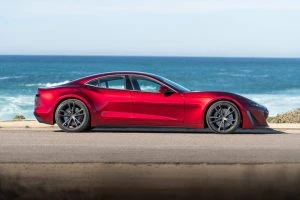
Drako-GTE
The Drako GTE is the brainchild of two Californian-based engineers and entrepreneurs. The car should deliver around 8,880 Nm of torque and a 400 km/h-plus top speed.
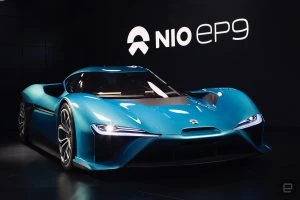
Nio-ep9
The Nio EP9 has actually delivered a 6 m 45.9 sec Nürburgring lap in the hands of Scottish driver Peter Dumbreck. The EV supercar boasts around 6334 Nm of torque and a down-force claimed to be twice that of an F1 car.
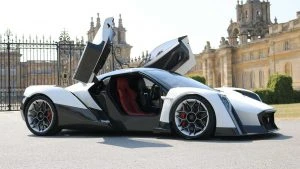
Dendrobium D-1
The Dendrobium has money and inspiration provided to it from Singapore; however it is being engineered and developed in the UK by Williams Advanced Engineering, and with people who were involved in the McLaren F1 design.